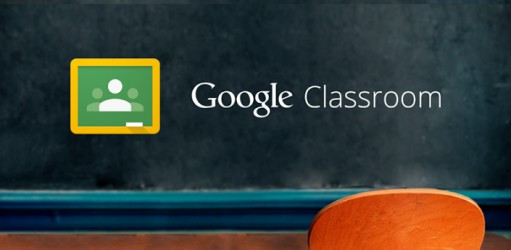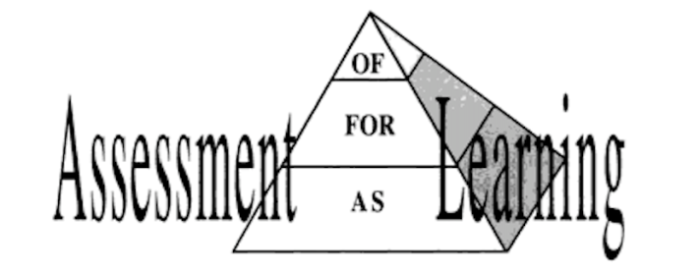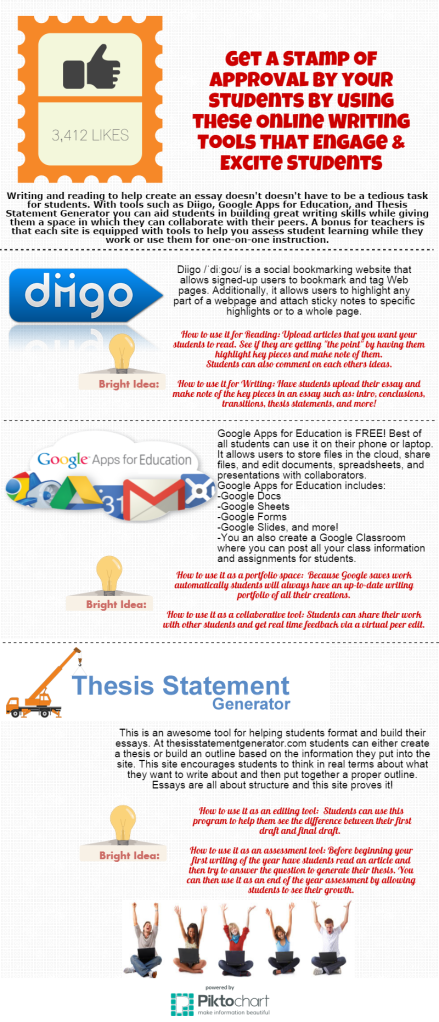For one of my last projects in my masters class I had to write something new. New being a genre or style that I hadn’t written in some time or ever before. I sat for quite some time on this assignment just thinking about what that something might end up being. Beginning my journey into writing something new I felt much like my students would, I was going into an area of writing that I was unfamiliar with practicing. As a teacher and journalist, I’m so used to writing in certain sets of genre that I rarely take the time outside of them to explore other opportunities personally. However, with this assignment I finally had the ability to push myself into areas unexplored in quite some time. As a memoir, my writing focused on areas of my life that I had long wanted to write about and share with others. Through this process of writing I was able to reconnect with myself as a writer and think in new terms of what actually makes people write. Are we more motivated by what we know, the ability to share with others, the need to share a good story…what is it that makes us as writers tick? And what makes a writer a writer? For me, all of these questions were answered. When we think about it, and really in the most simplistic of forms, we write because there is a driving force behind us to do it. Whenever we pick up a pen, pencil, computer, phone, whatever the method we are using to write with, we are doing it because of the overwhelming need to communicate with each other and because communication, both written and read, is at the heart of beings. For me this communication was sharing my life story with others. In doing this, I opened up very personal aspects of my life, traveled territories that had been left unchartered, and in the end felt satisfied with the journey. Would I say the piece I turned in is a work of art that the whole world will want to read? Probably not, but with the few people I shared it with I was bearing my soul and that was enough for me. To get feedback and feel that someone connected with me was worth it.
So when I think about this writing assignment, and the ones I give my students, I do so now with the understanding of how truly personal writing really is, no matter the form. We throw ourselves out there, whether it be our typical persuasive essay or narrative, with ideas and thoughts that we have taken from our personal beliefs. We share them and write in certain forms so that our ideas and thoughts are conveyed in the best manner possible. We do this time and time again, each time getting a little bit better than the last. And sometimes we are asked to write in ways we don’t understand, and that’s okay too, because in the end we learn from our mistakes. Either way, we can’t stop writing and expressing ourselves. We can’t draw the line at one particular genre or style, we must continue to evolve. We must continue to push the limits and see the lengths we will go to get it right. How easy that is to forget sometimes, teaching the same things day in and out. A lesson learned today. How very grateful to have this brought to my attention once again, after all, it’s what drove me to become an English teacher.
Lessons Learned-Key Concepts and Takeaways from CEP813

What is learning or assessment if we never have the opportunity to refine our work? This has been a question that has always intrigued me as an educator. I’ve encountered teachers who believed that there is no opportunity to refine, that once an assessment was done that was it. While others believed that there is no definite, that lessons to be learned were a continual growth process. I’m still stuck in the middle of the two, but know there comes a time when all things are final.
That day is today.
As I reflect on this past year of learning, and things that I have done that have made a difference in my own learning career, I think back to the beginning of it all and Lorrie A. Shepard’s (2000) thoughts on assessment and implying that assessments worth creating must have a level of motivation geared towards student use in the real world and their ability to be successful within it. This idea melds with that of Richard Marzano’s (2009) thoughts in regards to assessment by his research which notes the importance of allowing a student the opportunity to see their own growth through the practice of revision, self-reflection, and charting their successes. Looking at these together I see where this is what we have done in regards to CEP813. The times when we were challenged to go outside of our comfort zones and use new media to advance our own learning, even when it meant being uncomfortable, and the research of new applications to assess students in a digital era. These were all practices we were afforded as learners, as well as those we would ask of our own students.
With these very practices as building blocks underneath me, I am now able to present my best piece of work, the creation of my Google Classroom and the assessment pieces within it. In this assessment, students are provided with a space where they can house their work and continue to refine it and grow based on new lessons. Feedback is used as an integral piece, both as a student and teacher, and serves as a way of connection and growth. In this new era of digital learning, we must provide students with such tools and opportunities to drive student success and encourage motivation.
These thoughts, which are the basis for my project, were created with the teachings and research of Marzano and Shepard in mind, as well as others learned throughout my own practices within CEP813. To be able to incorporate these lessons by giving students the ability to grow their own portfolio, as well as use grades, feedback, and learning experiences as motivational factors, I know I can assist my students in achieving their educational goals while creating important building blocks to grow upon.
____________________________________________________
Marzano, R. (2009). Classroom assessment and grading that work. Alexandria, VA: Association for Supervision and Curriculum Development.
Shepard, L. (2000). The role of assessment in a learning culture. Educational Researcher, 29(7), 4-14
My Sandbox for Professional Growth

Throughout these past few months I been working within the realm of building my own digital portfolio. In hindsight, it has been much more of a reflective process than I once thought. When I began building my portfolio I saw each of my tasks as mere assignments along the way, not as opportunities. Probably much how a student would view an assignment in my class at times. But it was also within this process that I began to grow. I saw the continual outreach to colleagues and peers for help along the way beginning to expand through the sharing of my digital portfolio. New ideas and thoughts were beginning to form through emails, screencasts, tweeting, and blogging. I saw praise from those I’ve worked with in the past and helpful feedback from peers. I’ve been able to help others assess their work and have learned through their ideas, as well as share my own and receive much-appreciated feedback.
Then the lightbulb went on!
It has been assessment, in its finest and most natural sense, being brought to light by sharing works with the understanding that feedback was all part of the process. And in understanding this, and being ready for the commentary, it seemed the opportunities for endless learning and connectivity grew by leaps and bounds (Much as it should when we are looking to use digital contexts as an assessment piece.)
In short, it was a complete circle of learning.
And now, as I truly look at it all, with these same practices inserted into my final project, I see my own digital portfolio as a place for true growth. I will no doubt come back to the lessons I’ve learned. And why? Because I can. Through creating my own digital portfolio, I now have all of the creations I have made housed in such a manner that I can continue to refine and reflect upon them, much like I would ask of my own students.
But it’s more than just reflections on assessment and how they have helped shape me as an educator, it’s how I’ve grown and found a whole new world of others seeking out the same knowledge path. Through the connections I’ve made with other educators, on platforms such as Twitter and Google+, I have begun to build my own network of peers that weren’t available to me had I not been required to take those first steps into the brave new world we call technology and digital portfolios.
Theory to Practice-Beliefs on Digital Portfolios as a Learning Tool

Throughout the past few months, I have had the opportunity to look deep within the world of technology and its many affordances within the classroom. As I sit back now, with my Google Classroom creation in its final stage, I see how important it has been to build a place for students to be able to house their work in a space accessible to them. This what makes a digital portfolio such an important tool in learning and one in which I will always incorporate into my lesson plans. As we move students from grade to grade, and scaffolded learning processes build, it is important for them to see how they got there as well as their end goals. The usage of digital portfolios will only aid in this process.
As an English Language Arts teacher, students in my classroom are continually revising and revamping their pieces. Many times we will begin a work only to come back to it with a fresh perspective and new mindset. By being able to offer students the technological advancement of having a digital portfolio they no longer have to worry about such things as lost work or recreating a new piece, with their portfolio the work is always there and “waiting” for the next step. Much like I created in my CMS assessment, I see students in my classroom using digital portfolios as a way to revise, refine, and reflect on past works.
Not only this, through the use of digital portfolios students are able to see the learning process unfold and gain footing as an independent learner. As we have read with Nicol and Macfarlane-Dick (2006), “to develop systematically the learner’s capacity for self-regulation, teachers need to create more structured opportunities for self-monitoring and the judging of progression to goals” (p. 207). Digital portfolios allow students to do this. Furthermore, the use of digital portfolios pairs perfectly with research done by Hattie and Timperley (2007), as they help “set further appropriately challenging goals as the previous ones are attained, thus establishing the conditions for ongoing learning (p.88-89).Keeping in this belief system, as we move students into a new era of technology it only seems right to allow them the ability to use a CMS such as Google Classroom and Apps for education to help achieve learning goals through the development of their own digital learning portfolio.
It is with this that I will continue to find new ways in which to engage my students through the creation of their own digital portfolios. Due to the many the affordances it brings to the overall learning experience, whether it be creating a space to house all of their work or giving them the ability to use it as a source to connect with other students in regards to peer-to-peer editing or group project work, digital portfolios will forever have a place in my classroom.
Hattie, J., & Timperley, H. (2007). The power of feedback . Review of Educational Research, 77(1), 81–112.
Nicol, D., & Macfarlane-Dick, D. (2006). Formative assessment and self-regulated learning: A model and seven principles of good feedback practice. Studies in Higher Education, 31(2), 199–218.
Kluger, A. N., & DeNisi, A. (1996). The effects of feedback interventions on performance: A historical review, a meta-analysis, and a preliminary feedback intervention theory. Psychological Bulletin, 119(2), 254-284.
A closer look at Google Classroom & Assessments-Updated

This past week took me into the very deep depths of looking at CMS platforms for designing and driving instruction through the use of assessments. It was within this research that I spent much of the last week focusing in on what truly makes a great learning space and how we can successfully merge assessments and student learning factors in a way which is truly student-centered. Inspired by concepts provided by Lorrie A. Shepard (2000) and Ruth Dann (2010) in regards to student motivation and gearing assessments towards student achievement and learning, I put together a two-part assessment using Google Classroom. I ultimately picked this CMS due to the many affordances it offered both students and teachers in the way of feedback, learning tools, lesson options, and student growth capabilities. Through the use of Google Classroom students can work within a varying array of Google apps, each with the ability to provide feedback in real time and on a personal level. It is with this I believe students will benefit from the assessment I created because they will have the ability to work within the same environment they will use to write, edit, share, and peer review essays, all while receiving timely feedback from their instructor.
In addition to this, Google Classroom as a CMS is one which affords students the ability to keep all of their work within a specialized learning portfolio. No more papers that get lost, assignments that don’t load, and test results that get lost once handed back. This was very important to me as an ELA teacher because much of the work we do in regards to writing is working within the same texts in several different facets. Through the use of Google Classroom as a CMS all the work a student does will then be tied back to this “portfolio space” giving students the ability to access it everywhere. So just as it provides instant feedback through the use of Google Forms as an assessment, it also travels with the student and can be accessed anywhere. In this sense, I definitely see assessments within this CMS as providing enhanced learning.
As a whole, the assessment highlighted within this CMS was created to not only branch off of the aforementioned ideas but to give me an idea of where students are at within their knowledge of writing informational texts and how I should drive instruction based on the feedback the assessment provide. Through the actual assessment itself (and the unit then planned based on those findings) I believe students will see how the assessment is directly tied to the unit and how this information will then be used to drive instruction in the classroom. This idea, taken from Shepard (2000), is a very important piece and the reasoning behind creating this first assessment in its two parts. I wanted to see what students already knew and then have them see how the same questions asked on the assessment would then in turn find their ways into our lessons.
Below is a screencast of the assessment and overall look at the Google Classroom.
UPDATED:
After receiving very timely and critical feedback from a peer, took a closer look at my CMS to make some much-needed changes to allow for better instruction and feedback processes for my students. Through receiving this feedback, I was able to connect even deeper into my own reasoning behind its design and how the changes made will further instruction and allow for more constructive and timely feedback for students. Below you will find an updated screencast which showcases those changes, as well as an overall look at the newly remodeled CMS as a whole.
Dann, R. (2014). Assessment as learning: Blurring the boundaries of assessment and learning for theory, policy and practice. Assessment in Education: Principles, Policy & Practice, 21(2), 149-166. doi: 10.1080/0969594X.2014.898128
Shepard, L. (2000). The role of assessment in a learning culture. Educational Researcher, 29(7), 4-14
Formative Assessment Design 2.0
 Driving design based upon assessment was the goal with my Formative Assessment Design 2.0 project. Within this creation I have taken assessment ideas and practices from Lorrie A. Shepard, Ruth Dann, and Richard Marzano into account and used them to help me create an assessment that was student-centered. I mention their ideas roles within my creation because they were very instrumental in the concepts used to create a space for students that fostered student-centered learning, while focusing on feedback and motivational practices to drive instruction.
Driving design based upon assessment was the goal with my Formative Assessment Design 2.0 project. Within this creation I have taken assessment ideas and practices from Lorrie A. Shepard, Ruth Dann, and Richard Marzano into account and used them to help me create an assessment that was student-centered. I mention their ideas roles within my creation because they were very instrumental in the concepts used to create a space for students that fostered student-centered learning, while focusing on feedback and motivational practices to drive instruction.
As my research these past few weeks has led me to look deeper into using CMS platforms to build an assessment such as the one created, I have found that in some ways my design and own ways of thinking have changed in regards to what platform best serves student need. That being said, what I’ve found is that it’s not so much which one is the best, rather how you interject your role as a teacher into it and the mindfulness you allow your students through the assignments and assessments created. It is also how you plan to use the space to then help students achieve their learning goals.
It is with these new found ideas that I offer up the opportunity to look at the reasoning, or true backbone, as to the assessment I’ve created for an essay writing unit within my Formative Design 2.0. Within the link below you will gain more of an idea of what reasoning I choose to incorporate the design, feedback, instruction, and communication practices into my assessment and how I foresee them driving instruction.
Click here for my thoughts: Formative Assessment Design 2.0
Shopping for the Perfect CMS for Education & Assessment
When looking at Content Management Systems (CMS) to host your assessments it’s important to look at a variety of different options that will be available to both you and your students. This week I’ve had the opportunity to look at three different CMS platforms and how they would best suit my student’s needs in regards to assessment. Being an ELA teacher I’m looking for a site that will allow for varying different formats (videos, blogs, and links), incorporates engagement factors for students via direct contact with myself or other students, and the ability to provide connectivity to a learning portfolio so students are able to revise work as needed while having it stored in one place for easy access. With these needs in mind, I looked at Edmodo, Google Classroom, and Weebly as possible CMS platforms to build my Formative Assessment 2.0.
After checking out all of the above platforms I went with Google Classroom to design my assessment. While a self-deemed “Google Girl” I love the fact that Google Classroom ties into Google Plus and Google Drive. The connectivity GC offers through these options makes assessments and feedback much easier for both teachers and students. Because each of these options work well with one another and allow for students to download materials into their drive, instructors can provide one-on-one feedback and students can see their grades the minute they are posted.
In addition to this, the options for assessment are unlimited. Through Google Drive instructors have the ability to create a variety of different assessments by using Google Forms, Docs, or even Slides. With the use of Google Forms teachers can create a quick poll or a lengthy assessment that has options such as short answer, multiple choice, or checklists. Google Docs offers teachers the ability to have students write out an essay or even peer edit a paper. Slides is a great assessment tool for those looking to create an assessment in the form of a presentation.
In addition these great options for assessment, Google Classroom affords the teacher the ability to see who’s taken a test, turned work in, and is compatible with many district gradebook platforms. (As well as offers its own gradebook function!) These are HUGE in way of providing feedback that’s timely.
In all, these options make Google Classroom a great choice for both students and schools. For a complete list of the pros and cons of all the sites research click on the link here.
Trials, Tribulations, and Assessment Ideas with MinecraftEdu
These past two weeks have been challenging to say the least. As we entered into the virtual world of Minecraft as an educational tool my mind (and consequently my motion sickness) went to new heights in regards to how this could be used in the classroom. Not unfamiliar with gameplay integrated into learning, this was just a whole new genre of play I’m not used to. While I do believe in gaming as a way to help formulate and enhance learning, I just wasn’t sure how I could fit Minecraft into my realm of assessment in an ELA classroom. Doubts occurred while we listened to Jane McGonigal talk about how gaming could save the world, but as we listened to James Gee talk this week about the wonders of gaming and collaboration I found a new appreciate for this 21st-century mindset within teaching.
It was with this deep appreciation that I took the plunge into the world of Minecraft. Heavily influenced by the excitement of my children, I forged into this new world. While it wasn’t easy, I can say I truly appreciated the sense of excitement I saw within my children as they watched me create my first assessment. Aside from the motion sickness (I just don’t do well in a virtual world), and the lack of understanding so many of the actual ideologies of the game, it brought about ideas in regards to having students create their own assessments and share with others. If I put together a rubric in which case I also gave students a “blueprint” of what I wanted could they create their own world in which I assess their learning? Therefore allowing me to observe their play, rather than me clamoring about trying to create it for them? This is a question I have in mind and one that has taken up great space since I created my virtual assessment. I offer you a glimpse into my world and thought process with a viewing of my screencast of the actual assessment I created. In this assessment, I wanted students to note if they understood key terms in an essay by placing the correct color of block and/or piece of landscape. The assessment would be one in which they could do it at either the beginning or end of class and it would be quick enough that I could see what needed to be retaught, or even use it as a pretest into a writing unit.
You can view the screencast here:
Minecraft Assessment Screencast
While I first apologize for its somewhat lackluster look, please know it was with great tribulation and hours it took to create. Not a gamer this is not surprising, but just a prewarning to those that view. I welcome comments and ideas on how this could be better and I also give a shout out to all my fellow colleagues in CEP813. I viewed your work this week and am very lucky to be part of such a brilliant group.
Beginning the World of Minecraft
My children play Minecraft. When I downloaded it to their tablets for Christmas several years ago I never would’ve thought I would be asked to then use it in the classroom as a way of assessment, collaboration, and a learning platform. It is due to this that I have begun my own process of looking at myself as an educator and incorporating gaming into the classroom with much trepidation. Perhaps it is because I am inexperienced in the field itself, or because I find the idea of it too difficult to comprehend, I’m not sure, but my venture has had a rocky start from the very beginning.
As I will continue to grow over the course of the next few weeks on this, I wanted to keep my ideologies to a minimum, trying not to expound too far into any belief system. Within my next blog I hope to alleviate many of the concerns here and come to you with an open mind.
I share with you my first glimpse at the world of MinecraftEdu in the screencast below. This week’s adventure had left me more frustrated than I’ve ever been in terms of downloading software and actually using it. I’m hoping that as the week wears on so will my patience and level of learning in this new world.
Reading & Writing in the Digital Age-An Infograph of 3 Online Tools to Engage and Excite Students
How does one go about creating an informational piece that is both concise and eye-catching? Normally a question asked by advertising or marketing experts, it’s one that runs through the heads of educators every day. Whenever presenting material to students we inevitably think about the best way we can deliver information so it is both easy to understand and engaging. Questions such as, “Will they understand this?” and “Am I making it clear?” are often just a few of the many factors we think about when designing units and lesson plans. While we can only hope that the end product they submit answers those questions for us, we sometimes learn that what we thought was completely clear in regards to instructions and learning goals is missed by students.
So how can we cut through the clutter in today’s learning landscape to find solutions and sites that help us afford the most to our students in the way of targeted lessons that both engage and help assess their true learning? As complex of a question as that is, its answer most certainly lies in how well we understand their process of learning and the motivation we provide to them to continue to seek the answers. Keeping this in mind, I went in search of digital tools that would provide students with platforms that would grow with them as a learner and afford them the opportunity to collaborate with peers. I also wanted them to begin building a space in which they could use for an online learning portfolio. In my research I found three sites that would give students this type of safe learning space: Diigo, Google Apps, and an online writing site called Thesis Generator. Each of these digital tools afford students, and teachers, the ability to explore different facets of reading and writing online to include one-on-one instruction, differentiated learning processes and assessment opportunities What’s more is these sites give educators the ability to bring state standards and district curriculum guides into play. Knowing this is the basis for all instruction, these sites help reinforce important concepts so students can continue to build upon current skill sets while giving them the ability to track their learning and see their progression over time. As noted within recent research, a good assessment consists of a scaffolded learning processes (Shepard 2000;2005) and is melded with students having the ability to track their own growth through varying assessment process that are tied to both learning goals that are achievable; as well as student centered (Marzano 2009).
Keeping these very important ideas in mind, I created an infograph to highlight these three sites and show how they could be used in the classroom. Feel free to use them in your classroom.
Engaging Students in Essay Writing Infograph
Shepard, L. (2000). The role of assessment in a learning culture. Educational Researcher, 29(7), 4-14
Shepard, L. (2005). Linking formative assessment to scaffolding. Educational Leadership, 63(3), 66-70
Marzano, R. (2009). Classroom assessment and grading that work. Alexandria, VA: Association for Supervision and Curriculum Development.

